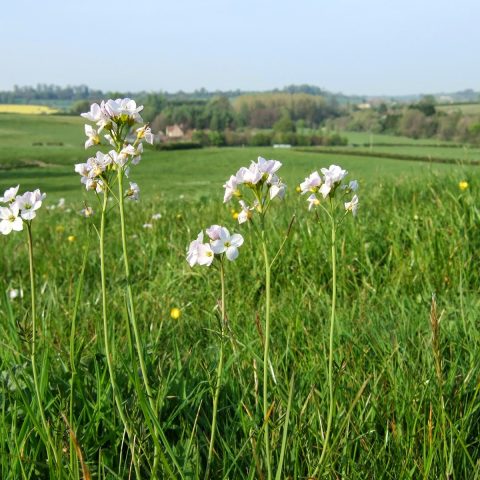Welsh Water's story
Welsh Water's 2016 acquisition of the 110-acre Lisvane and Llanishen Reservoir site, in north Cardiff, marked a milestone in the community's decade-long fight to preserve it. Home to two reservoirs and two sites of special scientific interest (SSSIs), it was earmarked for housing development before the community's Reservoir Action Group (RAG) campaigned to stop it. After a 12-year planning battle, they succeeded, and we were able to acquire the site.
Despite its urban surrounds, Lisvane Reservoir is an SSSI for overwintering birds; and the embankments of both reservoirs are an SSSI for waxcap fungi. Most of the reservoir grassland and scrub woodland outside the SSSI is designated as a site of importance for nature conservation (SINC) and Llanishen Dam is Grade II-listed. Knowing this, and having researched the local and national context, policy and plans, we decided to launch the Enabling Natural Resources and Well-being (ENRaW) project.
Cardiff is one of the UK's fastest growing cities. Its green spaces are under pressure from developers. The city has a large, ageing population for whom loneliness and isolation are concerns, and obesity rates are an ongoing challenge. Our ENRaW project, which is funded by the Welsh Government, aims to maximise the reservoirs' social value by transforming them into a hub for health and wellbeing for local people, while protecting and enhancing their unique ecology.
We are building a landmark visitor hub overlooking the water. The reservoirs will host water sports. Paths around the water will lead to accessible bird hides and viewpoints, conservation areas, and a learning zone with site-wide signage. A community engagement programme includes volunteering, education and social prescribing strands.
Partnerships and community engagement are vital to its success. In line with Wales' Well-being of Future Generations Act goals, we have worked closely with Cardiff Council to stitch the site into public rights of way so locals can access it on foot or by bike. We set up an ENRaW Partnership Board comprising Welsh Water, the RAG, Cardiff Council, and Cardiff and Vale University Health Board (UHB).
We collaborate with environmental organisations, the education sector and national sports bodies. For example, we were keen to support social prescribing through healthcare providers, so sought advice from Public Health Wales, which opened doors to working with Cardiff and Vale UHB. A cross-departmental working group at Cardiff Met University is also supporting this work. Cadw and Natural Resources Wales (NRW) guided us on the reservoir restoration, and NRW helped develop a mowing regime that supports fungi habitat while allowing us to safety check the reservoirs. We also collaborate with nature organisations to understand conditions and survey species on site, including the British Trust for Ornithology and Glamorgan Fungus Society.
Useful learnings from Welsh Water
If you understand the local and the national context you can ensure what you're developing is in line with local and national needs, as well as policy and plans. So, when we started this project, I read everything I could get my hands on: ecological reports; documents on the site's history; the national social value measurement framework (known as TOMS data), to understand the local area's needs and challenges; and local and national policies and plans, such as the Cardiff Well-being Plan, the Cardiff Liveable City report, Cardiff's Capital Ambition plan and the Well-being of Future Generations (Wales) Act 2015. This helped me understand the assets we had, the site's ecological value, local and national challenges and how this area could meet some of these needs.
Community engagement and buy-in for a project of this kind is crucial to its success, short- and long-term. In my previous roles – running independent charities and working for the Canal and River Trust – we were heavily dependent on volunteers and worked closely with communities through which our waterways passed. I could see many opportunities to do the same with this initiative. We had a ready-made support group in the Reservoir Action Group and have taken them on this journey with us. Though the group is winding down because it feels its work is done, many are involved in setting up an independent 'Friends of' group to help us care for the site into the future.
Regular communication is key to successful community engagement and team building. For the past four years, we have produced quarterly newsletters for 7,000 homes in the local area, keeping people up to date with our progress. We let neighbours know of any new works, run drop-in sessions, and have spoken to various community groups and at events, including at rotary clubs and a local environmental forum. We have asked for and listened to people's views and have run workshops to gather insight. When we put the planning application in for the new visitor hub, more than 3,000 people visited the virtual consultation.
With community engagement and partnerships crucial to our success, so too is capacity to manage that area of work. We invested in a partnership manager, whose role is dedicated to working with ENRaW partners, responding to enquiries, meeting residents, school groups and others. We couldn't have achieved what we have without creating this role. In retrospect, I would budget for more human resource to handle the administrative tasks and reporting that accompany community engagement.
Welsh Water's metrics
Ecological surveys have helped us establish a baseline to measure progress. Annual fungi surveys provide numerical data on the location, density and diversity of species. In 2021 we recorded 27 waxcap species, earthtongue and two very rare Dermoloma species – one which is unnamed and has only been found once before in the world.
When the site opens to the public, we will log visitor numbers, bookings and customer feedback. We will also log volunteer numbers, hours and education visits.






